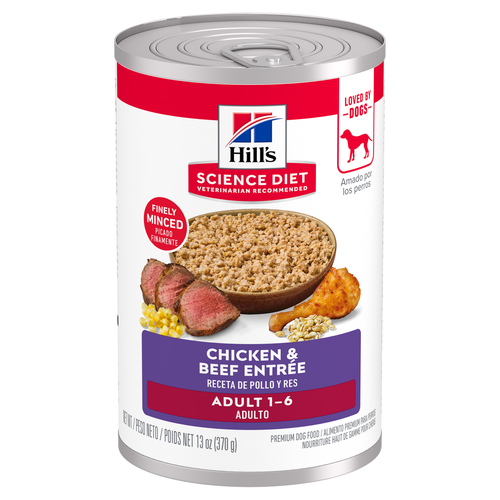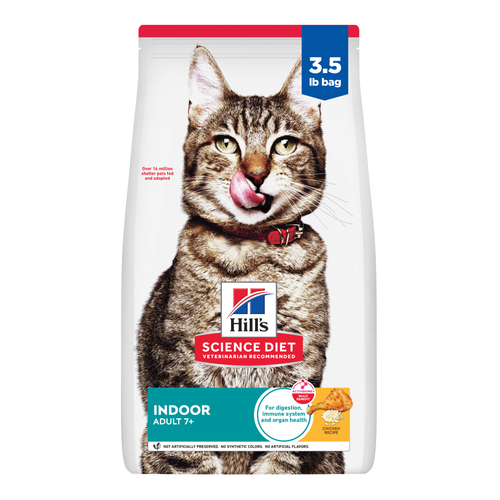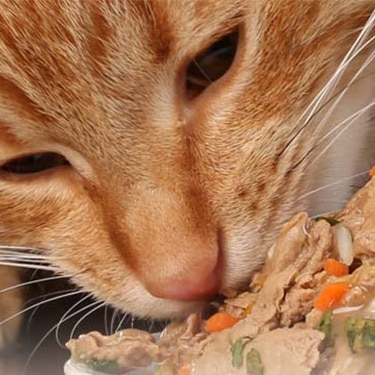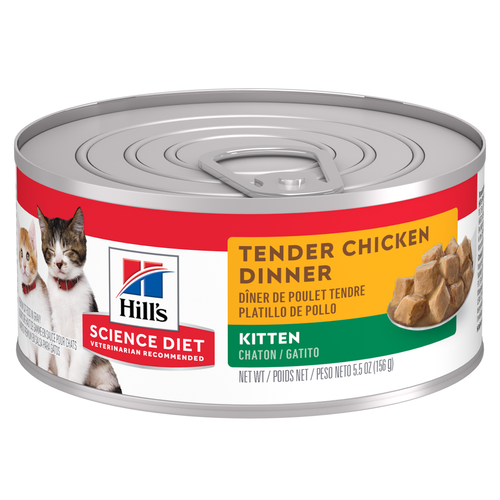
-
Find the right food for your petTake this quiz to see which food may be the best for your furry friend.Find the right food for your petTake this quiz to see which food may be the best for your furry friend.Featured products
 Hill's Science Diet Adult Chicken & Beef Entrée Dog Food
Hill's Science Diet Adult Chicken & Beef Entrée Dog FoodChicken & Beef Entrée in a delicious loaf with complete & balanced nutrition to help keep adult dogs active and healthy
Shop Now Adult Chicken & Barley Recipe Dog Food
Adult Chicken & Barley Recipe Dog FoodSupports lean muscle and beautiful coat for adult dogs
Shop Now Adult Large Breed Chicken & Barley Recipe Dog Food
Adult Large Breed Chicken & Barley Recipe Dog FoodSupports healthy joints, lean muscle, and beautiful coat for large breed dogs
Shop NowFeatured products Senior Vitality Adult 7+ Tuna & Vegetables Stew
Senior Vitality Adult 7+ Tuna & Vegetables StewImproves Everyday Ability to Get Up & Go
Shop Now Adult 7+ Indoor Chicken Recipe Cat Food
Adult 7+ Indoor Chicken Recipe Cat FoodSupports energy level and beautiful fur in mature indoor cats
Shop Now Adult Turkey & Liver Entrée Cat Food
Adult Turkey & Liver Entrée Cat FoodPrecisely balanced nutrition with the delicious taste of minced turkey & liver to help fuel the energy needs of cats during the prime of their life
Shop Now -
Dog
- Dog Tips & Articles
-
Health Category
- Weight
- Food & Environmental Sensitivities
- Urinary
- Digestive
- Joint
- Kidney
-
Life Stage
- Puppy Nutrition
- Adult Nutrition
- Senior Nutrition
Cat- Cat Tips & Articles
-
Health Category
- Weight
- Skin & Food Sensitivities
- Urinary
- Digestive
- Kidney
-
Life Stage
- Kitten Nutrition
- Adult Nutrition
Featured articles What Is Littermate Syndrome? Pet Adoption Guide
What Is Littermate Syndrome? Pet Adoption GuideLearn more about littermate syndrome in dogs and cats and how to successfully navigate adoption and early socialization processes.
Read More How to Properly Mix Wet & Dry Pet Foods
How to Properly Mix Wet & Dry Pet FoodsAn Orange cat eating from a bowl filled with mixed food
Read More The Science Behind Our Love for Pets
The Science Behind Our Love for PetsLearn the scientific reasons why we have such strong connections with our pets, and what science says about the love between humans and our furry friends.
Read More -


With Halloween just around the bend, you and your family are probably looking forward to more treats than tricks. Those colorful, foil-wrapped delights can also tempt your feline family members, but cats and candy can be a dangerous combination. For their safety, keep your kitty away from your candy stash.
Dangerous Foods for Cats

Some ingredients commonly found in Halloween candy and treats can upset your cat's stomach, while others can be downright toxic. The ASPCA warns against the following foods in particular.
Chocolate
The ingredient that makes up the majority of Halloween candy — and the one that might just be the yummiest to your kids — is also one of the most toxic to your pets. Chocolate contains caffeine and the compound theobromine, both of which can cause vomiting, diarrhea, hyperactivity, heart arrhythmia, muscle tremors and seizures. The ASPCA notes that dark chocolate is more dangerous than milk or white chocolate, as it has higher levels of these harmful substances.
Dairy-Based Treats
Cats have low levels of the enzyme that helps the body digest lactose in milk and dairy products. While ingesting candy that contains dairy isn't likely to be lethal, it can cause an upset stomach, vomiting and digestive issues such as diarrhea.
Xylitol
This sweetener is used as a sugar substitute in many sugar-free candies and chewing gums. In dogs, xylitol is known to raise insulin levels and cause a severe drop in blood sugar, and it can lead to liver failure. While there aren't reported cases of this occurring with cats, Preventive Vet suggests this may simply be because cats are more discerning about what they eat. It's better to be safe than sorry and keep your cat away from sugar-free treats.
Raisins
There's always that one house that hands out boxes of raisins in place of candy. What's meant to be a healthy treat for your kids, however, can be unsafe for your pets. All types of raisins and grapes are known to cause kidney failure in dogs. While less common, according to the Animal Emergency & Referral Center of Minnesota, there have been reports of cats showing signs of toxicity after eating grapes and raisins. Keep those little boxes out of paw's reach.


Tasty Tips
Choking Hazards
Toxicity isn't the only danger that comes from mixing cats and candy. Your cat is actually less likely to be tempted by the candy itself than by those colorful, crinkly candy wrappers. What they may see as a new toy can be a choking hazard. If your cat manages to ingest a wrapper without choking on it, it could cause an intestinal blockage, warns the ASPCA.
Paper sticks left over from lollipops and hard candy can also become choking hazards. To keep your kitty out of harm's way, store all Halloween candy securely in a place where they can't get to it, and discard all of the wrappers properly.
If Your Cat Ingests Candy
Here's what to do if you think your cat might have eaten some candy (or a candy wrapper):
- If possible, determine what and how much they ate.
- Call your veterinarian, who can advise you whether you should observe your cat for signs of toxicity or bring them in for treatment.
- If you can't reach your vet, call the nearest emergency pet hospital. You can also call the Pet Poison Helpline at 1-855-764-7661 or the ASPCA Poison Control Center at 1-888-426-4435.
If you have small children in the house, there's more than one reason to supervise their candy intake. Make sure they aren't tempted to share their tasty sweets with the family cat and that they don't leave any wrappers lying around for them to play with. If you want to involve your cat in the Halloween fun, throw a few of their favorite cat treats or kibbles in a treat-dispensing toy. Give your kitty a Halloween cat treat that's good for them — and leave the human treats to the humans.


Jean Marie Bauhaus is a pet parent, pet blogger, and novelist from Tulsa, Oklahoma, where she usually writes under the supervision of a lapful of fur babies.
Related products

Improves Everyday Ability to Get Up & Go

Precisely balanced nutrition with the delicious taste of minced turkey & liver to help fuel the energy needs of cats during the prime of their life

Supports energy level and beautiful fur in mature indoor cats

Delectable chunks with tender chicken smothered in a rich gravy
Related articles

Learn how to litter train a kitten with this guide to potty training, including when to start litter training kittens and troubleshooting tips.

When you adopt a cat, you don't just gain a best friend; you also save her life. Here's why getting a cat from a local animal shelter makes so much sense.

Discover which cat toys games your feline friend might like, and how they are great sources of exercise. Explore our library of articles to learn more.

Discover how to train your cat, starting with very basic first steps that both reward good behavior and discourage the bad.

Put your cat on a diet without them knowing
Our low calorie formula helps you control your cat's weight. It's packed with high-quality protein for building lean muscles, and made with purposeful ingredients for a flavorful, nutritious meal. Clinically proven antioxidants, Vitamin C+E, help promote a healthy immune system.
Put your cat on a diet without them knowing
Our low calorie formula helps you control your cat's weight. It's packed with high-quality protein for building lean muscles, and made with purposeful ingredients for a flavorful, nutritious meal. Clinically proven antioxidants, Vitamin C+E, help promote a healthy immune system.


